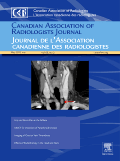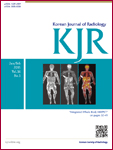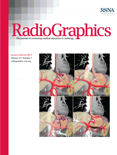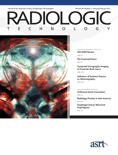
CANADIAN ASSOCIATION OF RADIOLOGISTS JOURNAL-JOURNAL DE L ASSOCIATION CANADIENNE DES RADIOLOGISTES
Scope & Guideline
Transforming Practice: Essential Reading for Radiology Professionals
Introduction
Aims and Scopes
- Clinical Guidelines and Protocols:
The journal frequently publishes comprehensive clinical guidelines aimed at standardizing practices in various imaging modalities, ensuring that radiologists adhere to updated protocols for patient safety and diagnostic accuracy. - Artificial Intelligence and Machine Learning:
A significant focus has emerged on the integration of artificial intelligence (AI) and machine learning technologies in radiology, exploring their applications in diagnostic imaging, workflow optimization, and predictive analytics. - Diversity, Equity, and Inclusion (DEI) Initiatives:
The CARJ emphasizes the importance of diversity, equity, and inclusion within the radiology workforce, as well as in patient care practices, addressing systemic biases and promoting equitable healthcare access. - Innovations in Imaging Techniques:
Research published in the CARJ often highlights advances in imaging technologies, including developments in CT, MRI, and ultrasound, focusing on improving diagnostic capabilities and patient outcomes. - Interventional Radiology:
The journal covers advancements in interventional radiology, addressing both clinical practices and innovations in techniques that enhance patient care and treatment efficacy.
Trending and Emerging
- Integration of Artificial Intelligence:
There is a marked increase in publications focusing on AI applications in radiology, particularly in diagnostic accuracy, workflow efficiency, and the development of AI tools tailored for radiological practice. - Patient-Centric Care Models:
Emerging themes emphasize the importance of patient-centered care models, including the integration of patient feedback and experiences into radiological practices to enhance overall healthcare delivery. - Tele-radiology and Remote Consultations:
The COVID-19 pandemic has accelerated the trend towards tele-radiology and virtual consultations, with a growing number of studies addressing the effectiveness and logistics of remote imaging services. - Multidisciplinary Collaboration:
There is an increasing focus on the collaboration between radiologists and other healthcare professionals, highlighting the role of radiology in comprehensive patient management and treatment planning. - Radiomics and Imaging Biomarkers:
Research on radiomics and the use of imaging biomarkers is gaining prominence, offering insights into how detailed imaging data can inform prognosis and treatment responses.
Declining or Waning
- Traditional Radiology Techniques:
There seems to be a decreasing emphasis on conventional radiological techniques without integration of advanced technologies, as the field increasingly leans towards innovative approaches and AI-driven methodologies. - Single-modality Imaging Studies:
Research that solely focuses on single-modality imaging (e.g., CT or MRI in isolation) is becoming less frequent, with a noticeable shift towards multimodal imaging studies that provide comprehensive diagnostic insights. - Historical Perspectives on Radiology:
The journal has seen a decline in articles that offer historical analyses or perspectives on radiology practices, reflecting a forward-looking approach that prioritizes current innovations and future directions.
Similar Journals

Applied Radiology
Exploring New Horizons in Radiological PracticeApplied Radiology, an esteemed journal published by Anderson Publishing, Inc., has been a significant contributor to the field of radiology since its inception in 1973. With a focus on innovative imaging techniques and their application in clinical practice, this journal serves as an invaluable resource for researchers, healthcare professionals, and students aiming to stay at the forefront of advancements in radiology, nuclear medicine, and imaging. Applied Radiology holds a Q4 quartile ranking in the category of our field, indicating its niche yet essential role in disseminating knowledge and fostering dialogue among radiologists. The journal operates primarily under subscription access, ensuring a curated access to publications that reflect the dynamic nature of research and technology in radiology, particularly up to the year 2024. As it continues to guide the future of radiological practices, Applied Radiology remains dedicated to delivering high-quality, peer-reviewed content that supports ongoing education and clinical excellence.

EUROPEAN JOURNAL OF RADIOLOGY
Advancing Imaging Excellence in HealthcareThe European Journal of Radiology, published by Elsevier Ireland Ltd, is a premier peer-reviewed journal in the fields of radiology, nuclear medicine, and imaging. Established in 1981, it has carved a significant niche within the academic community, showcasing innovative research that enhances medical imaging practices and improves patient care. With an impressive ranking in the Q1 category for both Medicine (miscellaneous) and Radiology, Nuclear Medicine, and Imaging in 2023, the journal is recognized globally for its commitment to advancing scientific knowledge and improving imaging methodologies. The journal's Scopus ranking of #60/333, placing it in the 82nd percentile, underlines its reputation for high-quality research and scholarly contributions. While traditionally a subscription-based journal, it continually evolves to meet the demands of the academic landscape, aiming to bridge the gap between research and clinical practice. Researchers, healthcare professionals, and students alike can benefit from exploring its extensive archives and current publications, which are curated to foster education and innovation in the medical imaging domain.

KOREAN JOURNAL OF RADIOLOGY
Pioneering Research in Radiology and Nuclear MedicineKorean Journal of Radiology (ISSN: 1229-6929, E-ISSN: 2005-8330), published by the Korean Society of Radiology, stands as a leading international platform for the dissemination of high-quality research and advancements in the fields of radiology, nuclear medicine, and imaging. With a remarkable impact factor and ranked in the Q1 quadrant in its category, this journal showcases cutting-edge studies, clinical investigations, and comprehensive reviews that significantly contribute to the understanding and practice of medical imaging. Researchers, clinicians, and students alike will find the journal an invaluable resource, featuring innovative methodologies, case studies, and essential updates in imaging technology. Since its inception in 2000 and continuing through 2024, the Korean Journal of Radiology remains dedicated to promoting excellence and fostering collaborative research within the global radiology community, underscoring the importance of imaging in modern medicine.

RADIOGRAPHICS
Transforming Radiological Practices through KnowledgeRADIOGRAPHICS, published by the Radiological Society of North America (RSNA), is a premier academic journal dedicated to the field of radiology, nuclear medicine, and imaging. With an impressive impact factor and recognition in the top quartile (Q1) of both Medicine (miscellaneous) and Radiology, Nuclear Medicine and Imaging categories, RADIOGRAPHICS stands out as a leading platform for disseminating high-quality research and clinical findings. Since its inception in 1985 and projected to run until 2024, the journal has consistently provided essential insights into cutting-edge imaging techniques and advancements in radiological practices, making it invaluable for professionals, researchers, and students alike. Although it does not offer open access, the journal continues to flourish with a robust reputation, ranked 35th in its field according to Scopus, placing it within the 89th percentile of its category. With an unwavering commitment to enhancing the understanding and application of radiological sciences, RADIOGRAPHICS remains a pivotal resource for advancing knowledge and expertise within the medical community.

Iranian Journal of Radiology
Commitment to Excellence in Diagnostic Imaging ResearchWelcome to the Iranian Journal of Radiology, a pivotal platform dedicated to advancing the field of radiology, nuclear medicine, and medical imaging. Published by BRIEFLAND, this journal aims to disseminate high-quality original research, reviews, and clinical studies that contribute substantially to the global scientific community. Established in 2008 and spanning until 2024, the journal provides an essential archive of knowledge in a rapidly evolving discipline. Although it currently holds a Q4 quartile ranking in the 2023 Scopus metrics, it serves as an important resource for both emerging and established researchers looking to submit their work. Located in the Netherlands, the journal is committed to open dialogue and collaboration amongst professionals in the field, reflecting its accessibility and relevance to both practitioners and academics. With its continued growth and commitment to quality, the Iranian Journal of Radiology is poised to enhance understanding and innovation in diagnostic imaging.

Radiologic Technology
Shaping Radiologic Practices Through ResearchRadiologic Technology, published by the American Society of Radiologic Technologists, serves as a pillar in the fields of radiology, nuclear medicine, and imaging, providing critical insights and advancements that shape the practice and profession. With an ISSN of 0033-8397 and E-ISSN 1943-5657, this esteemed journal has been contributing to the scholarly literature since 1963 and continues its commitment to quality research well into 2024. Although it is not an open-access journal, Radiologic Technology is recognized for its robust contributions, holding a Q3 quartile ranking in both "Radiological and Ultrasound Technology" and "Radiology, Nuclear Medicine, and Imaging," according to the latest 2023 category quartiles. Its Scopus rankings highlight its standing within the field, offering thought-provoking articles that encourage further exploration and innovation. As the landscape of medical imaging evolves, this journal remains a crucial resource for researchers, practitioners, and students aiming to enhance their understanding of radiologic technologies and their applications in modern healthcare.

Radiologie
Connecting Radiological Science to Clinical ExcellenceRadiologie, published by SPRINGER HEIDELBERG, is an emerging journal dedicated to the fields of radiology, nuclear medicine, and imaging. With an ISSN of 2731-7048 and E-ISSN 2731-7056, this journal does not currently offer open access, providing a traditional yet respected platform for scholarly communication. Founded in 2022, it aims to advance the understanding of cutting-edge imaging techniques and their applications in clinical practice, contributing to improvements in diagnostic accuracy and patient care. Despite its recent establishment, Radiologie is positioned within the Q4 quartile category, reflecting its developing presence in the academic landscape, with a current Scopus rank of #231 out of 333 in its category. The journal serves as a vital resource for researchers, professionals, and students seeking to stay abreast of the latest developments in radiological science, imaging technology, and their clinical implications, ensuring ongoing engagement and advancement in this critical area of healthcare.

Japanese Journal of Radiology
Advancing the Frontiers of Medical ImagingThe Japanese Journal of Radiology, published by SPRINGER, serves as a premier platform for disseminating cutting-edge research and clinical advancements in the fields of radiology, nuclear medicine, and imaging. With an ISSN of 1867-1071 and E-ISSN 1867-108X, this journal has established itself as a vital resource for practitioners, researchers, and students alike. Renowned for its high-quality peer-reviewed articles, it currently enjoys a respectable impact factor within the Q2 category of Scopus rankings, placing it in the 69th percentile among 333 journals in its field. The journal has seen consistent convergence of research from 2009 to 2024, further underscoring its commitment to advancing the understanding of radiological practices. Importantly, the journal offers Open Access options to facilitate widespread dissemination of knowledge, ensuring that vital research reaches its audience without barriers. Addressed in Japan, the Japanese Journal of Radiology plays a critical role in enhancing the global discourse on medical imaging, making it an essential resource for anyone engaged in this dynamic field.

Radiologia Medica
Innovative Research Bridging Disciplines in Radiology.Radiologia Medica, published by Springer-Verlag Italia SRL, is a premier Italian journal dedicated to the field of radiology, nuclear medicine, and imaging. With a rich history dating back to 1947, this journal has consistently provided cutting-edge research and findings, contributing significantly to advancements in medical imaging techniques and practices. As evidenced by its impressive Q1 rankings in both Medicine (Miscellaneous) and Radiology, Nuclear Medicine and Imaging, Radiologia Medica holds a prestigious position within the top tier of medical journals, ranked #11 out of 333 in its category and residing in the 96th percentile according to Scopus metrics. Although it is not currently offered as an Open Access journal, its robust subscription model supports extensive research dissemination. Researchers, professionals, and students alike will find invaluable insights and knowledge critical for advancing their understanding and practice within this dynamic field. Situated in Milan, Italy, Radiologia Medica continues to be an influential platform for the exchange of high-quality research, bridging various disciplines and promoting excellence in radiological science.

EUROPEAN RADIOLOGY
Shaping the Future of Medical ImagingEUROPEAN RADIOLOGY, published by SPRINGER, stands as a prestigious international journal in the field of radiology, nuclear medicine, and imaging, with an impressive impact factor that underscores its significance among peers. With an ISSN of 0938-7994 and an E-ISSN of 1432-1084, this journal provides a platform for cutting-edge research and advancements in medical imaging from 1991 to 2024. Recognized as a Q1 journal in both general Medicine and the specialized Radiology category by 2023, EUROPEAN RADIOLOGY ranks an impressive #17 out of 333 in its field according to Scopus, placing it in the 95th percentile. While it does not currently offer Open Access options, the journal remains essential reading for researchers, professionals, and students striving to stay at the forefront of developments in diagnostic imaging and related technologies. By contributing to a comprehensive understanding of radiological practices, EUROPEAN RADIOLOGY plays a crucial role in shaping the future of medical diagnosis and patient care.